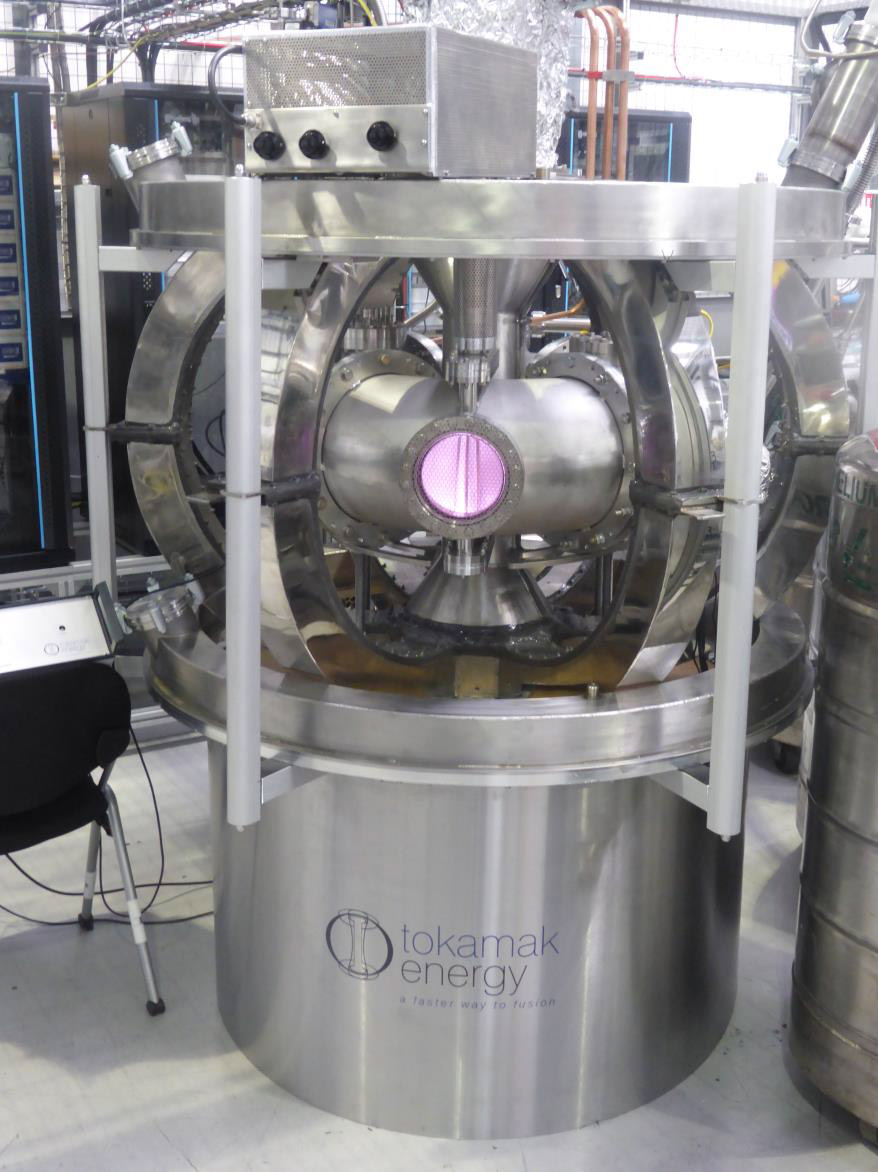Notes on fusion

The ST25-HTS tokamak.
Governments around the world have been interested in fusion for more than 70 years. Fusion research was largely secret until 1968, when the Soviets unveiled exciting results from their tokamak (a magnetic confinement fusion device with a particular configuration that produces a toroidal plasma). The Soviets realized that tokamaks were not useful as weapons but could produce plasma in the million-degree temperature range to demonstrate Soviet scientific and technical prowess to the world.
Following this breakthrough, government laboratories around the world continued to pursue various methods of confining hot plasma to understand plasma physics under extreme conditions, getting closer and closer to the conditions necessary for fusion energy production. Tokamaks have been by far the most successful configuration. In the 1990s, the Tokamak Fusion Test Reactor at the Princeton Plasma Physics Laboratory produced 10 MW of fusion power using deuterium-tritium fusion. A few years later, the Joint European Torus (JET) in the United Kingdom increased that to 16 MW, getting close to breakeven using 24 MW of power to heat the plasma.


 Five former chairmen of the U.S. Nuclear Regulatory Commission—Stephen Burns, Allison Macfarlane, Nils Diaz, Richard Meserve, and Dale Klein—
Five former chairmen of the U.S. Nuclear Regulatory Commission—Stephen Burns, Allison Macfarlane, Nils Diaz, Richard Meserve, and Dale Klein—



 The European Commission’s current strategy for developing a hydrogen economy—part of its overall goal of achieving a climate-neutral European Union by 2050—needs to make more room for nuclear power. That’s according to a report published in December by the New Nuclear Watch Institute (NNWI), an industry-supported think tank based in the United Kingdom.
The European Commission’s current strategy for developing a hydrogen economy—part of its overall goal of achieving a climate-neutral European Union by 2050—needs to make more room for nuclear power. That’s according to a report published in December by the New Nuclear Watch Institute (NNWI), an industry-supported think tank based in the United Kingdom.